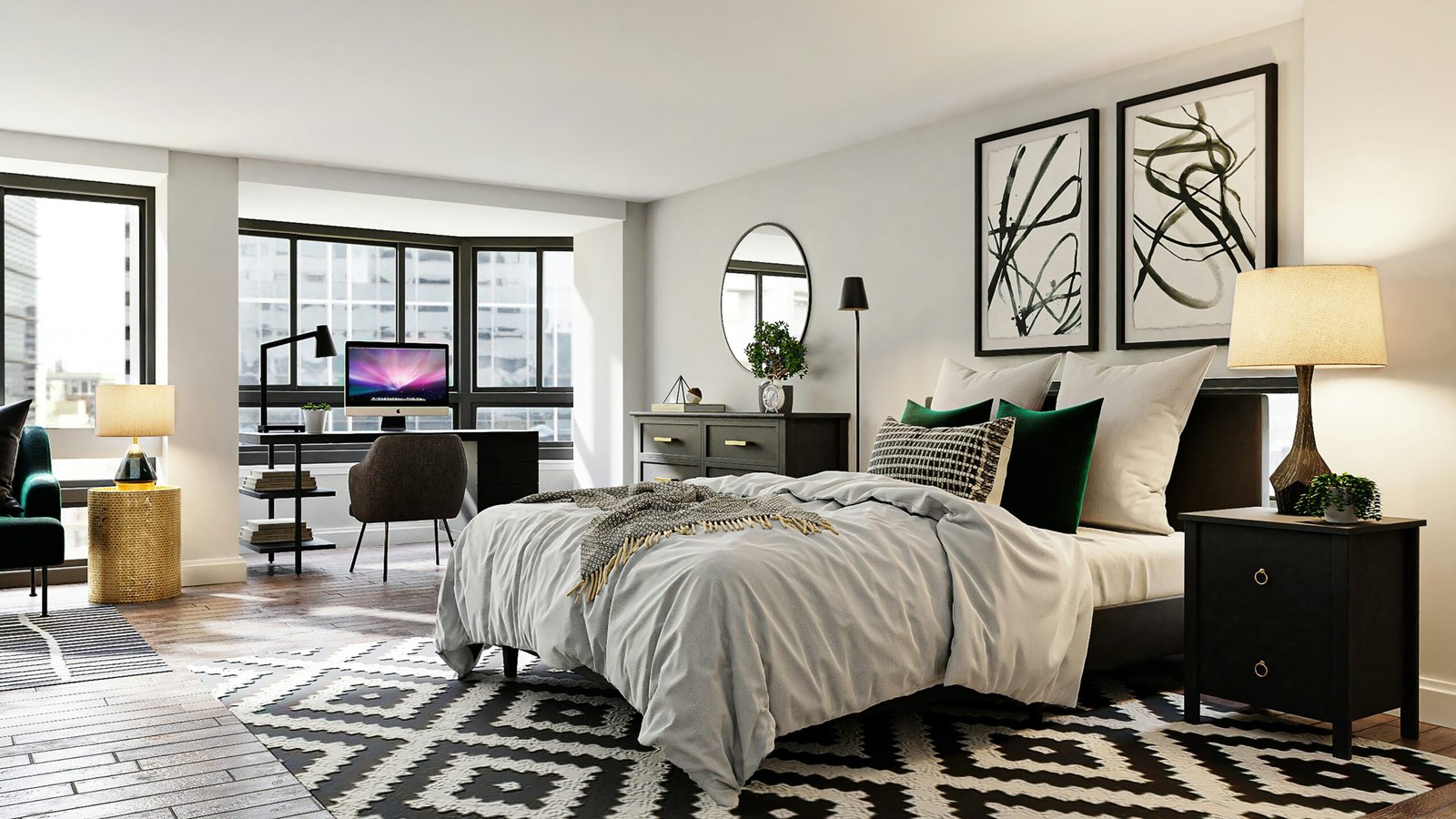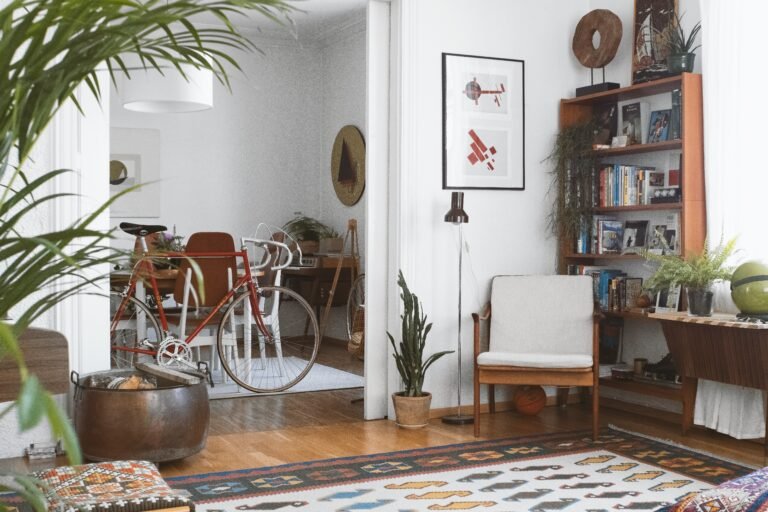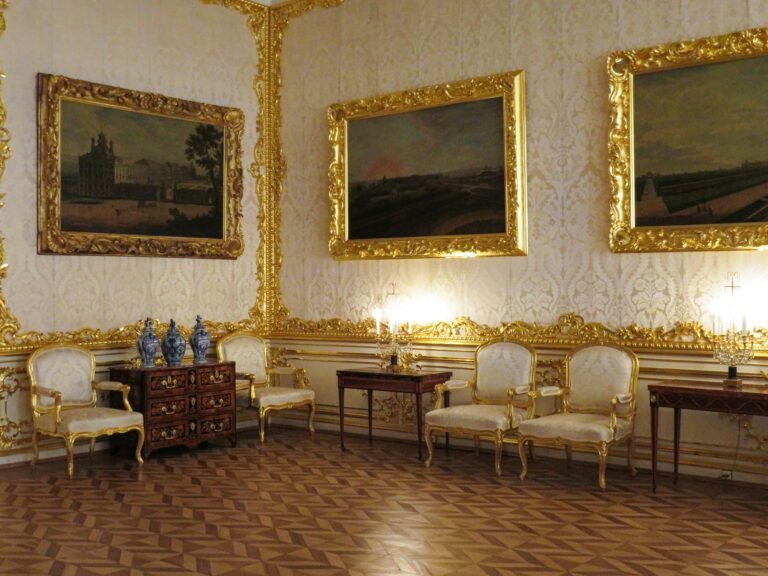You’ve saved hundreds of pins, made a dozen mood boards, and yet… nothing feels right. One minute you’re loving clean, minimalist lines, the next you’re eyeing boho rattan chairs like your life depends on it. You try to describe your vibe, but all that comes out is “I don’t know… I just like what I like?”
Sound familiar?
Here’s the thing: you’re not indecisive — you’re just not speaking the design language yet. And until you figure out your interior style, it’s hard to decorate with confidence. Every decision feels like a gamble, and every room ends up a little mismatched.
I’ve helped people at every stage of their design journey — from first-time renters trying to make white walls feel personal, to homeowners ready to refresh their space after years of “making do.” And every time, it starts with one simple thing: helping them figure out who they are in the world of interiors.
In this guide, you’ll learn how to decode your personal style step by step — in a way that’s actually fun, not full of intimidating design terms. By the end, you won’t just know what your interior style is. You’ll know how to use it to create a space that finally feels like you.
Why Finding Your Style Matters
Let’s be honest — it’s tempting to skip this part. You might be thinking, “Can’t I just start shopping and see what looks good?” Technically, yes. But that’s exactly how people end up with a room full of pieces they liked in the shop but don’t love at home.
Here’s the truth: knowing your interior style isn’t about slapping a label on your living room. It’s about clarity.
When you know your style:
- You stop second-guessing every decision. No more wondering if that rug works with your sofa — if it fits your style, it fits.
- You save money. You’re not buying trendy pieces that don’t go the distance.
- You feel more at home. Your space reflects you, not what’s trending this week.
Think of it like building a wardrobe. When you understand your personal style, you don’t waste time buying clothes you’ll never wear. The same goes for your home — it becomes a space that fits you like your favourite outfit.
And don’t worry — finding your style doesn’t box you in. It gives you a strong foundation to build on, whether you want to mix styles, evolve over time, or break a few “rules” on purpose. It’s not about restriction. It’s about direction.
Step-by-Step Style Discovery
You don’t need to be an interior designer to know your style — you just need the right questions. Here’s how to figure it out, step by step.
1. Look at Your Wardrobe and Lifestyle
Start where your taste is already showing up — your clothes.
Do you wear soft neutrals and clean lines? Or are you into bold patterns and vintage textures? Your personal style in fashion often mirrors what you love in interiors. The same goes for how you live — are you all about calm and minimal, or energetic and expressive?
Ask yourself:
- What colours do I wear most?
- Do I prefer structure or flow?
- Do I value comfort, aesthetics, or both?
2. Pinpoint What You Don’t Like
Sometimes it’s easier to start with a “no.” If you feel overwhelmed by options, rule a few out.
Look at your saved images or Pinterest boards and ask:
- What doesn’t fit with the rest?
- Which images make me go “ugh” instead of “ooooh”?
This helps clear the noise so you can see patterns more clearly.
3. Collect and Compare Inspiration
Now’s the time to go full visual. Gather 10–15 images that make you feel something — from Instagram, Pinterest, magazines, wherever.
Don’t overthink it. Just go with your gut.
Once you’ve got them, lay them out together and look for:
- Recurring colour palettes
- Common materials (wood, metal, linen, etc.)
- Shapes and silhouettes (curvy vs clean lines)
- Room moods (light and airy, moody and dramatic, playful and eclectic)
4. Identify the Patterns
You’ll start to notice themes. Maybe every image has natural textures, muted tones, or statement lighting. Maybe it’s a lot of plants, layered textiles, or mid-century legs on every piece of furniture.
These are clues. This is your taste, showing up in small, consistent ways.
5. Use Adjectives Before Labels
Before jumping to “I’m boho!” or “I’m industrial!”, try describing your vibe with adjectives first.
Words like:
- Warm
- Structured
- Calm
- Textured
- Airy
- Grounded
- Playful
- Minimal
This will help you find a deeper, more flexible understanding of your style — and make it easier to communicate it later (to yourself, a partner, or a designer).
6. Match It to Practical Needs
Finally, layer in how you live. Your style also needs to work for your life.
Ask:
- Do I need a pet-friendly or kid-proof space?
- Do I love hosting or prefer quiet, private spaces?
- Do I work from home?
- Am I renting or renovating?
Your dream style should still feel like home. It’s not about chasing a look — it’s about creating a space you’ll actually enjoy living in.
The Most Common Styles (and What Defines Them)
Once you’ve got a sense of your vibe, it’s helpful to see how it lines up with established styles. You don’t have to pick just one — but knowing what’s out there can give you language and structure to build on.
Here’s a rundown of some of the most popular interior styles:
1. Scandinavian
Vibe: Clean, calm, functional
You’ll see: Light wood, neutral colours, simple furniture, lots of natural light
Perfect for: People who value minimalism but want it to feel warm, not sterile
2. Industrial
Vibe: Edgy, raw, urban
You’ll see: Exposed brick, metal fixtures, leather, dark tones, reclaimed wood
Perfect for: Loft lovers, city dwellers, and anyone into a more rugged aesthetic
3. Bohemian (Boho)
Vibe: Eclectic, relaxed, creative
You’ll see: Layered textures, plants, patterns, warm colours, vintage finds
Perfect for: Free spirits who want their home to tell a story
4. Mid-Century Modern
Vibe: Sleek, retro, timeless
You’ll see: Clean lines, tapered legs, bold colours, statement lighting
Perfect for: Lovers of 50s/60s style with a modern twist
5. Minimalist
Vibe: Calm, clutter-free, purposeful
You’ll see: Monochrome palettes, clean surfaces, very little “stuff”
Perfect for: People who crave simplicity and order
6. Traditional
Vibe: Elegant, timeless, layered
You’ll see: Rich woods, classic furniture shapes, symmetry, plush fabrics
Perfect for: Lovers of comfort, refinement, and heritage design
7. Modern Farmhouse
Vibe: Cozy, inviting, fresh
You’ll see: Shiplap, black accents, neutral palettes, rustic touches
Perfect for: Anyone who loves the warmth of rustic style with a modern edge
8. Japandi
Vibe: Balanced, serene, natural
You’ll see: A mix of Japanese minimalism and Scandinavian warmth, natural materials, low furniture
Perfect for: Fans of quiet, considered design with a zen-like feel
You might find yourself drawn to one of these styles — or a blend of two or three. That’s totally normal. The goal isn’t to box yourself in — it’s to find a look that feels right and use it as a starting point.
Can You Mix Styles?
Short answer: yes, absolutely.
In fact, most people do — even if they don’t realise it. Very few homes follow a single style to the letter. And honestly? That’s what makes a space feel lived-in, layered, and personal.
But here’s the key: mixing styles is an art, not a free-for-all. If you throw everything you like into one room with no plan, it’ll feel chaotic instead of curated.
Here’s how to mix styles with confidence:
1. Pick a “Lead” Style
Think of this like your home’s main character. It should take up around 70% of your space’s look and feel. The other 30% can come from supporting styles that add contrast or personality.
For example:
- Love Scandinavian style but also drawn to vintage pieces? Start with a Scandi base (light, minimal, calm) and add a few antique touches for warmth and charm.
- Obsessed with industrial but want to soften it? Use industrial shapes and textures, but bring in boho textiles or earthy colours.
2. Use a Unified Colour Palette
Even wildly different styles can work together when they share a colour scheme. If your palette is consistent, your space will feel cohesive — even if your furniture isn’t all from the same design playbook.
3. Repeat Elements
Pick one or two things to repeat throughout the space — like a material (e.g. matte black metal), a shape (e.g. rounded edges), or a texture (e.g. linen). This repetition gives the room rhythm and helps tie styles together.
4. Anchor with Simplicity
When in doubt, pull back. If you’re mixing styles, avoid going overboard on decor. Clean lines and negative space help balance visual variety. A little breathing room goes a long way.
The goal isn’t to create a museum of styles — it’s to create a space that feels like you. Trust your instincts, stick to a few guidelines, and don’t be afraid to break the “rules” once you understand them.
Living Your Style (Not Just Naming It)
Knowing your interior style is one thing. Living it — making choices that reflect it — is where the magic happens.
Here’s how to start bringing your design identity to life, step by step.
1. Shop With Purpose
Before you buy anything new, check in with your style notes. Ask:
- Does this fit my style keywords?
- Will it work with what I already have?
- Do I love it, or am I settling because it’s trendy/on sale/easy?
Your style should act like a filter — helping you say no more easily, and yes with more confidence.
2. Start With One Room (or One Corner)
You don’t need a full makeover to express your style. Pick one space — even just a reading nook or your entryway — and bring your design identity to life there.
Small wins build momentum. One styled shelf that feels like you beats a whole house of “meh.”
3. Use What You Already Own
You might be surprised how much of your existing stuff fits your style once you see it through that lens. Move pieces around. Pair things differently. Try putting that vintage chair in a new spot or layering textiles to change a room’s feel.
Living your style is about intention, not constant spending.
4. Create a Mood Board for Future Decisions
Keep a digital or physical mood board you can refer back to. It acts as your north star whenever you’re decorating, rearranging, or shopping. If something doesn’t match the vibe — it’s probably not for you.
5. Don’t Rush the Process
Style evolves. And so does your home. You don’t need to get it perfect right away — and spoiler: you won’t. That’s okay.
Instead of aiming for a magazine-worthy room, aim for a space that makes you feel calm, inspired, or energised — whatever your personal vibe is.
Your home should grow with you, not pressure you to be someone else.
Conclusion & Next Steps
Finding your interior style isn’t about following rules — it’s about figuring out what feels right for you. Once you’ve got that clarity, decorating stops being overwhelming and starts being fun.
So here’s what to do next:
- Revisit your inspiration boards with fresh eyes.
- Look at your home through the lens of your style keywords.
- Choose one corner or room to start experimenting in.
- Keep things flexible — you’re not locked into one look for life.
And remember: your home isn’t meant to impress a magazine editor. It’s meant to reflect you — your taste, your lifestyle, your story.
So take a breath, trust your gut, and start creating a space that actually feels like home.
Alex is the creator of Homely Haven, a space dedicated to simple, stylish ideas for interiors and gardens alike. With a passion for cozy living rooms, inviting outdoor spaces, and practical DIY solutions, Alex shares tips and guides that help turn any house into a true home.
From budget-friendly decorating hacks to weekend garden projects, the goal is always the same: to inspire you to create spaces that feel personal, beautiful, and welcoming. When not writing, Alex is usually rearranging furniture, sketching new garden layouts, or exploring design trends for the next project.








